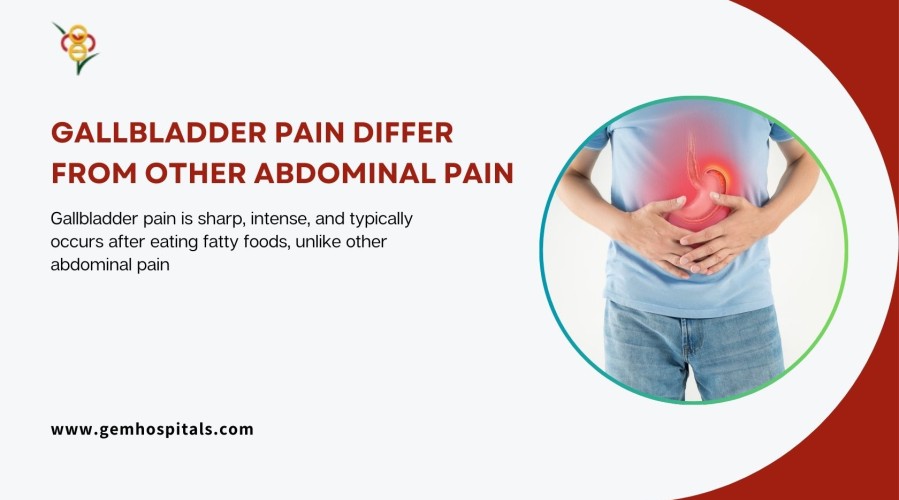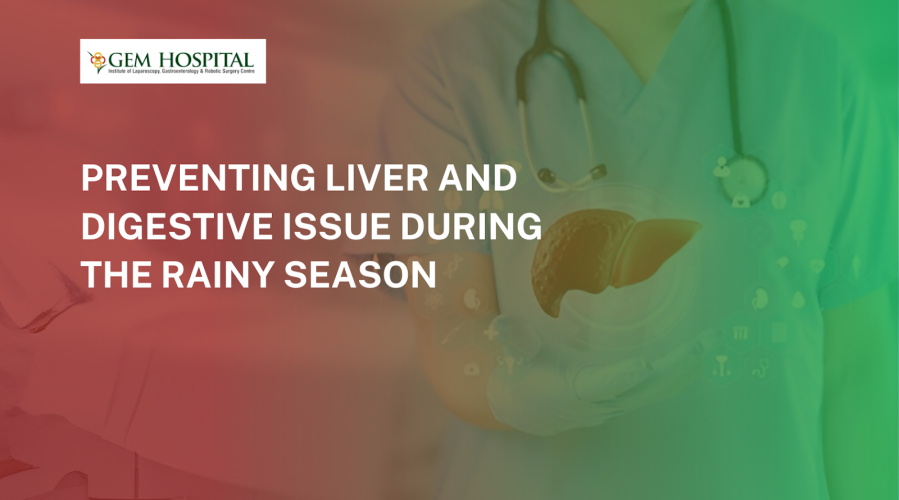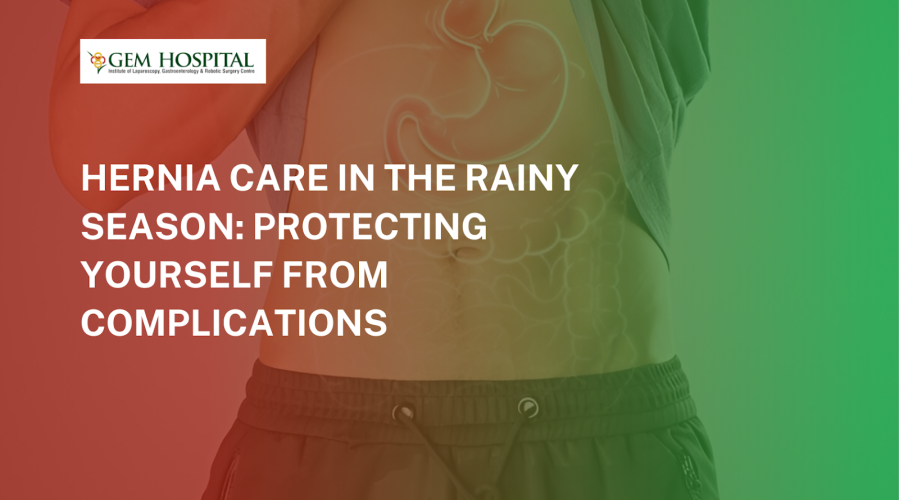Learn how to prevent liver and digestive issues during the rainy season with simple diet tips, hygiene practices, and immunity-boosting habits to stay healthy and infection-free.
How Does Gallbladder Pain Differ from Other Abdominal Pain?

Abdominal pain can be as a result of many things and thus it may not be easy to know what is causing the pain. Among them, gallbladder pain is not the same, which is characterized by the nature and causes of the pain. Understanding how it is unique from other types of abdominal pains will help in identifying the reason why it is so and the appropriate management to be provided.
Understanding Gallbladder Pain
The gallbladder is a small pear shaped organ located in the right side of the abdomen, just below the liver and holds bile which is used in digestion of fats. This organ can produce sharp or aching pain in cases like gallstones or inflammation of this organ. They are not like other pains in the abdomen because they are described to occur when one is eating fatty foods.
This kind of pain is often due to gallbladder related conditions such as cholecystitis, gallstones or biliary colic. The first step toward differentiating it from other abdominal ailments is to grasp some of the peculiarities which define it.
Key Characteristics of Gallbladder Pain
Gallbladder pain has some unmistakable features, including:
- Location: It is often felt in the upper right abdomen, over the liver area of the body.
- Duration: The signs may take a few minutes to several hours of the occurrence of the issue in question.
- Nature: It is usually described as a stitch or a spasm, but a soreness may also be experienced as a dull ache.
- Triggers: It is often precipitated by fatty foods because the gallbladder contracts in a bid to release bile into the intestines.
- Associated Symptoms: This pain may be associated with nausea or vomiting, bloating or even sharp pain in the right shoulder or back.
These differences help to distinguish gallbladder pain from other forms of abdominal pain more easily than other causes of discomfort.
How Gallbladder Pain Differs from Other Abdominal Pain
Pain in the abdominal area can come from many sources and organs have their own characteristics of pain. Here’s how gallbladder pain sets itself apart:
1. Location
While gallbladder pain is localized in the upper right abdomen, other types of abdominal pain can occur in different areas:
- Appendicitis: Usually starts just above the navel and then migrates to the lower right quadrant.
- Peptic Ulcers: It is usually localized in the upper middle abdomen.
- Irritable Bowel Syndrome (IBS): May result in flatulence or pain in the lower part of the abdomen.
2. Triggers
Gallbladder pain often arises after consuming fatty or greasy foods, whereas:
- Kidney Stones: Pain is not associated with meals but may be caused by dehydration or movement.
- Pancreatitis: Can get worse after a large meal but is not as closely associated with fats.
3. Type of Pain
Gallbladder pain is sharp or colicky, with episodes of intensity, while:
- Gas or Bloating: Usually causes a boring, vague sort of pain.
- Diverticulitis: Causes chronic sharp dull pain that is often located in the lower left quadrant of the abdomen.
4. Associated Symptoms
Gallbladder pain may be accompanied by nausea and may radiate to the shoulder or back. Other abdominal issues may have distinct symptoms:
- Kidney Stones: Flank pain severe, haematuria.
- Peptic Ulcers: Pain or burning in the stomach, which may be eased by food or antacids.
By knowing these differences a person can eliminate the possibilities of what could be causing the discomfort in the abdomen and whether it involves the gallbladder.
Diagnostic Methods to Identify Gallbladder Pain
If gallbladder pain is suspected, the patient needs to seek medical attention. Common diagnostic approaches include:
- Ultrasound: This imaging test is widely used for diagnosing gallstones and gallbladder inflammation.
- HIDA Scan: Assesses gallbladder function by monitoring the movement of bile.
- Blood Tests: Search for features of infection or bile duct obstruction.
- CT Scan: Can assist in determining whether there are any complications or if the pain is due to some other reason.
These tools enable the healthcare providers to determine whether the gallbladder is the cause of pain.
When to Seek Medical Attention
Although, sometimes, gallbladder pain may be mild and disappears on its own, there are signs that require medical attention. Seek help if you experience:
- Persistent pain that is constant and very sharp and lasts for several hours.
- Pain along with high fever or chills.
- Jaundice which is a condition characterised by yellowing of the skin or the eyes.
- Intractable vomiting.
Failure to observe these symptoms might result in other problems such as gallbladder rupture or infection.
Managing Gallbladder Pain
The management of gallbladder pain is based on its origin and intensity. Options may include:
- Dietary Changes
Foods that are high in fat and cholesterol should be avoided to minimize pain and avoid triggering a flare up. - Medications
The use of analgesics, available over the counter or from a doctor’s prescription, may help. - Surgery
In serious cases of gallstones or other problems with the gallbladder, the gallbladder may need to be removed through an operation called cholecystectomy. - Lifestyle Adjustments
Some of the ways that one can take care of the gallbladder include; eating a balanced diet, taking small portions of food, and drinking water.
Your healthcare provider will help you know the right way to handle your condition as you continue with your normal life.
Pain in the gallbladder area is unique from the rest of the abdominal cramps given its causes and accompanying symptoms. Being aware of these differences can assist you in going for a checkup when you need it and preventing future mishaps.
Are you suffering from gallbladder pain or any other abdominal pain? Worry no more GEM Hospital is there for you. All our specialists work closely with you to help you get the best care that meets your requirements. Contact us today and schedule an appointment to get the help you need.
Blogs & Article
Learn how to manage and protect yourself from hernia complications during the rainy season. Get simple, practical tips to reduce discomfort, prevent infections, and stay safe in wet weather.
Learn how the rainy season can affect pancreatic cancer patients and discover simple, effective ways to strengthen your immune system. Stay protected with practical diet, hygiene, and lifestyle tips.


